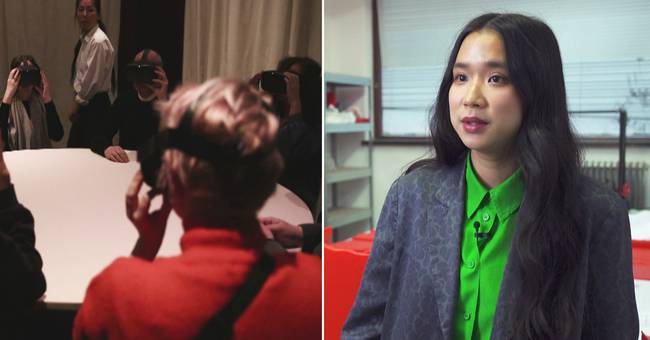Lap-See Lam's works are total installations with video, virtual reality works and 3D-scanned sculptures, all based on the Chinese restaurant that her grandmother from Hong Kong started in the 1970s, and which Lap-See's parents ran on Södermalm in Stockholm for many years. .
- We also lived near the restaurant, so me and my siblings spent a lot of time there as children.
When my parents retired and sold the restaurant a few years ago, I suffered from separation anxiety.
I wanted to document the environment before it disappeared and borrowed an architecture scanner at the Academy of Fine Arts.
The original idea was to make as realistic a rendering of Kinakrogen as possible, as a personal memorial document.
But the scanner missed a lot of information, so-called "glitches" in the image, which made the restaurant look like a spooky shipwreck with furniture tarnished by prickly algae.
Experienced with a VR helmet
- When I saw this ruin, it was as if the material told me what the works would be about, namely the passage of time, memories and identity, says Lap-See Lam.
The films were developed into spatial total installations, where analog worlds were scanned in 3D and then printed out into objects and sculptures, which are experienced in combination with a VR helmet, so that the viewer is surrounded by the work;
sails out into an infinite space with layers upon layers of sunken Chinese taverns.
Skeletal ghosts move inside.
- The wire figures appeared when people happened to pass the scanner and were registered by mistake.
One millisecond of a movement stuck.
Right now, such a neon wire figure can be seen sitting on a bench in the entrance of the art gallery Magasin III in Stockholm's Frihamn, which opens for booked screenings after being closed for three years.
For Lap-See Lam, several international projects and a solo exhibition await at Bonniers Konsthall.

